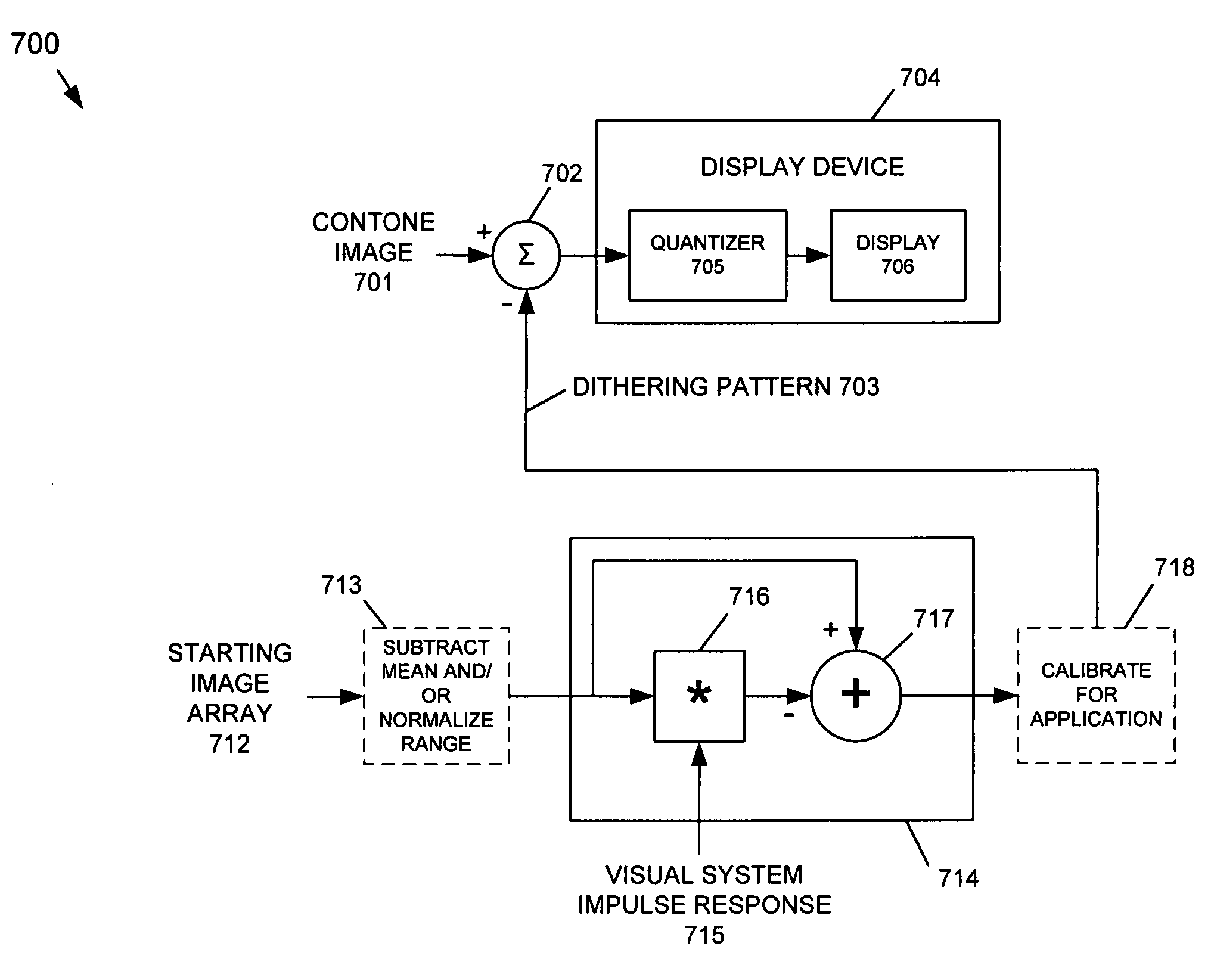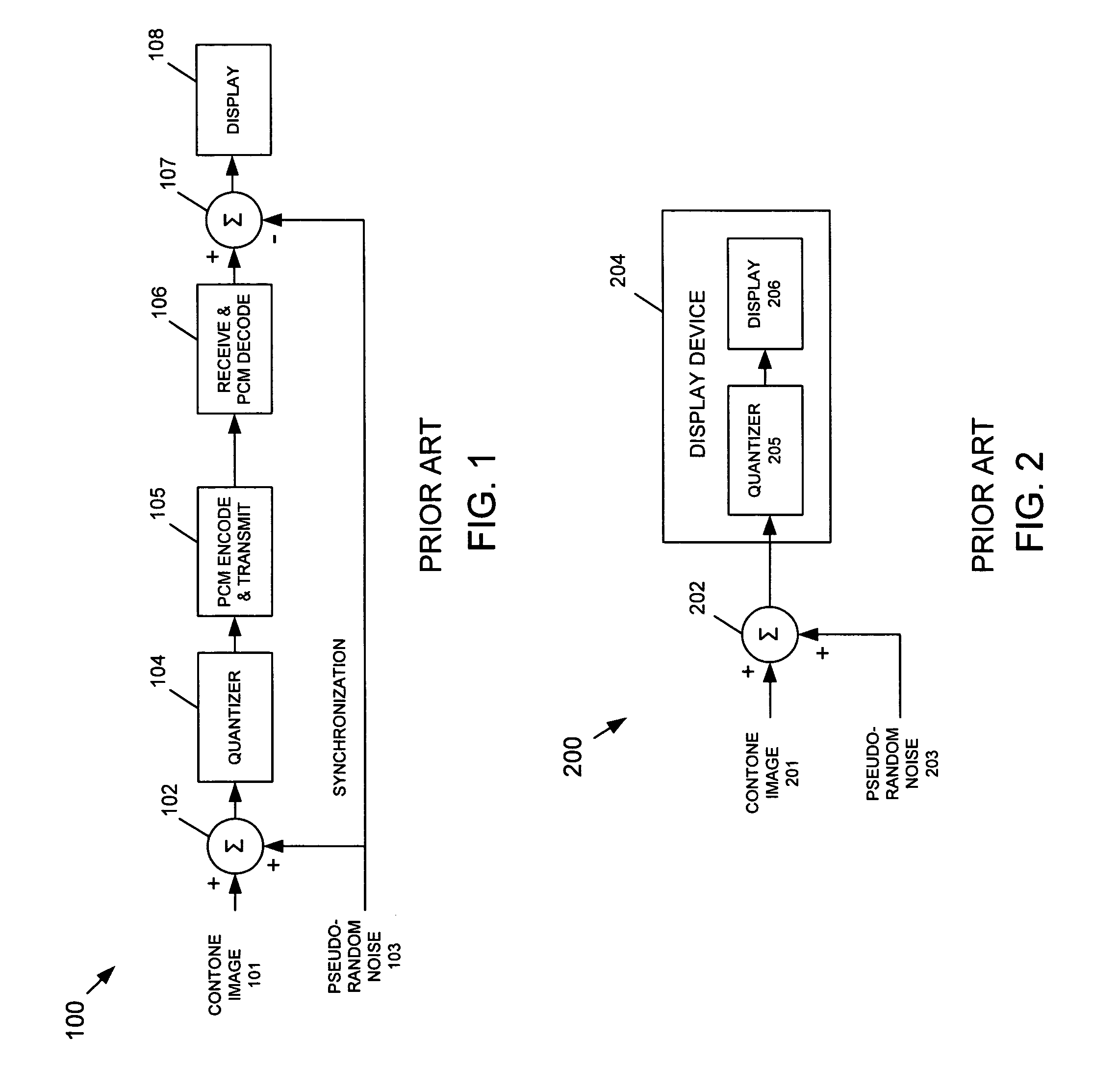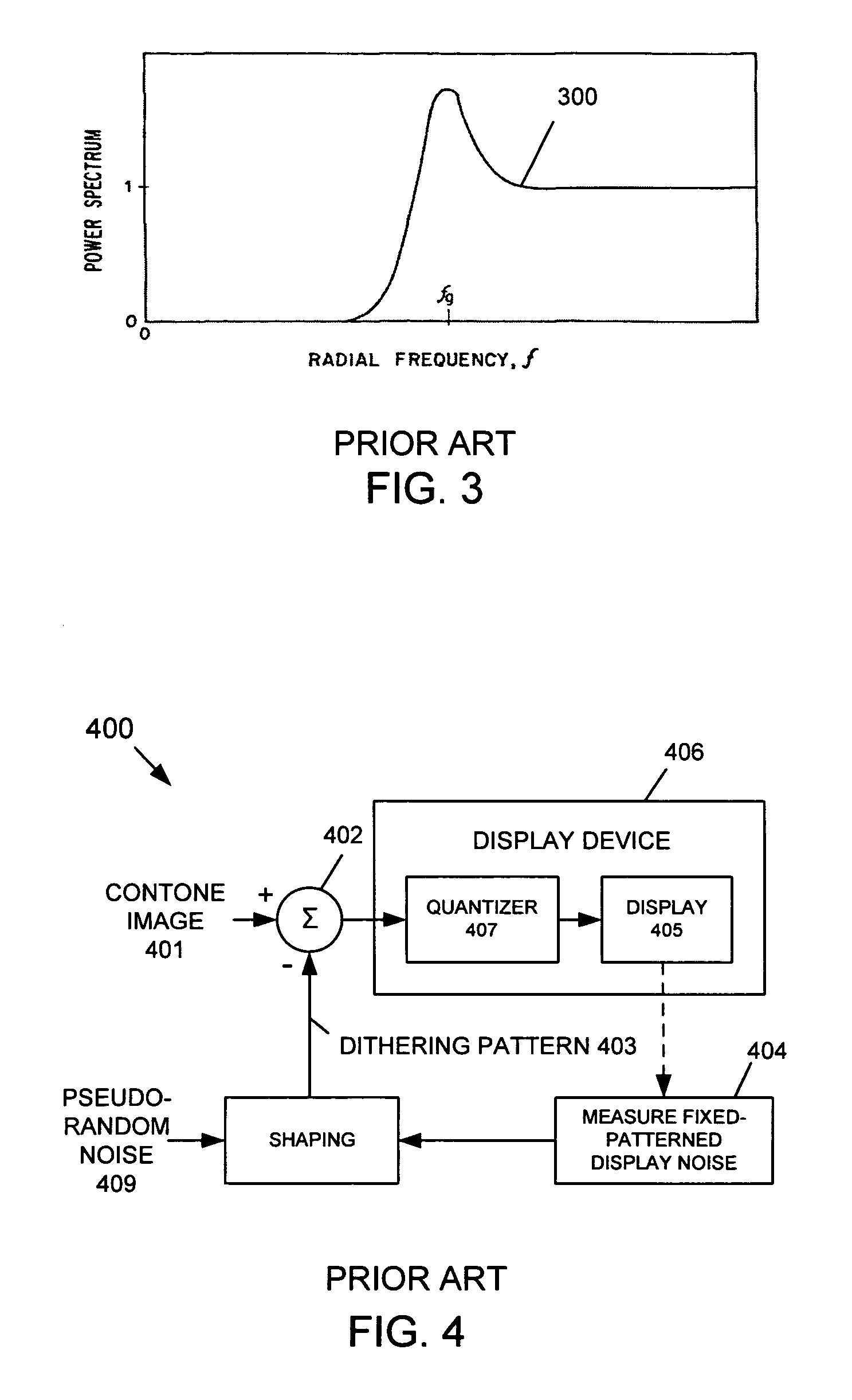Bit-depth extension of digital displays via the use of models of the impulse response of the visual system
a visual system and impulse response technology, applied in the field of digital displays, can solve the problems of low-cost displays, unable to achieve the effects of reducing the spatial resolution of images, and reducing the cost of display
- Summary
- Abstract
- Description
- Claims
- Application Information
AI Technical Summary
Benefits of technology
Problems solved by technology
Method used
Image
Examples
Embodiment Construction
[0041]The present invention provides a Bit-Depth Extension (BDE) technique that uses a dithering pattern that is generated entirely using spatial operations, that is, without using frequency-transform techniques. Accordingly, the BDE technique of the present invention prevents contouring artifacts from appearing in an image that is displayed by a display having a bit-depth that is less than the bit-depth of the image. In one exemplary embodiment, the dithering pattern is generated based on an achromatic visual model. In another exemplary embodiment, the dithering pattern is generated based on a spatio-chromatic visual model.
[0042]The present invention is primarily intended for use with Liquid Crystal Display (LCD) or similar type displays having a digital bit-depth bottleneck, such as graphics controller cards having limited video RAM (VRAM). Bit-depth limitations can also arise in an LCD display itself, or the internal hardware driver of an LCD display. Accordingly, the present inv...
PUM
| Property | Measurement | Unit |
|---|---|---|
| luminance | aaaaa | aaaaa |
| bit-depth | aaaaa | aaaaa |
| bit depth | aaaaa | aaaaa |
Abstract
Description
Claims
Application Information
 Login to View More
Login to View More - R&D
- Intellectual Property
- Life Sciences
- Materials
- Tech Scout
- Unparalleled Data Quality
- Higher Quality Content
- 60% Fewer Hallucinations
Browse by: Latest US Patents, China's latest patents, Technical Efficacy Thesaurus, Application Domain, Technology Topic, Popular Technical Reports.
© 2025 PatSnap. All rights reserved.Legal|Privacy policy|Modern Slavery Act Transparency Statement|Sitemap|About US| Contact US: help@patsnap.com



